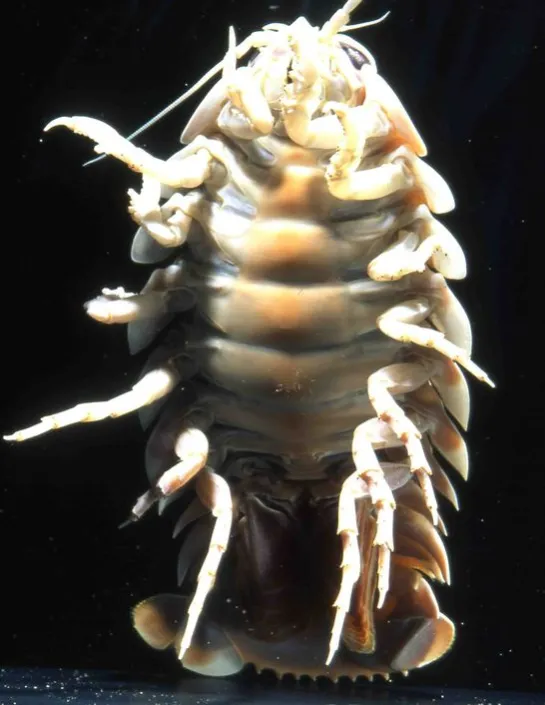It therefore has seven pairs of legs of the same appearance, and unstalked eyes. It weighs approximately 1 kg for a length of 30 cm.

Arthropods or shellfish

Identity card
Japan, Taiwan, Philippines
Lives in the abyssal depths down to - 2,300 m.
About 20 cm.
Mainly a scavenger, also feeds on fish and cephalopods.

The giant isopod looks like and is related to the woodlouse! It is a crustacean, of the order isopoda.
It therefore has seven pairs of legs of the same appearance, and unstalked eyes. It weighs approximately 1 kg for a length of 30 cm.
The giant isopod is a benthic species that lives on the continental slope. They can be found at depths of between 310 and 2,300 m over a sandy or detrital seabed.
The isopod is a deep-sea species that can be found off Japan, Taiwan and the Philippines.
Their exoskeleton consists of:
Journey on the High Seas

The Ocean Mag
In the spotlight
Poissons, crevettes, requins, les animaux qui se reproduisent ou sont élevés à Nausicaá rejoignent les espaces d'exposition.

Article
Which came first, the egg or the fish? A brief overview of eggs and reproductive strategies in marine animals.
Article
Coral, the planet's largest builder, is a fragile and threatened animal.